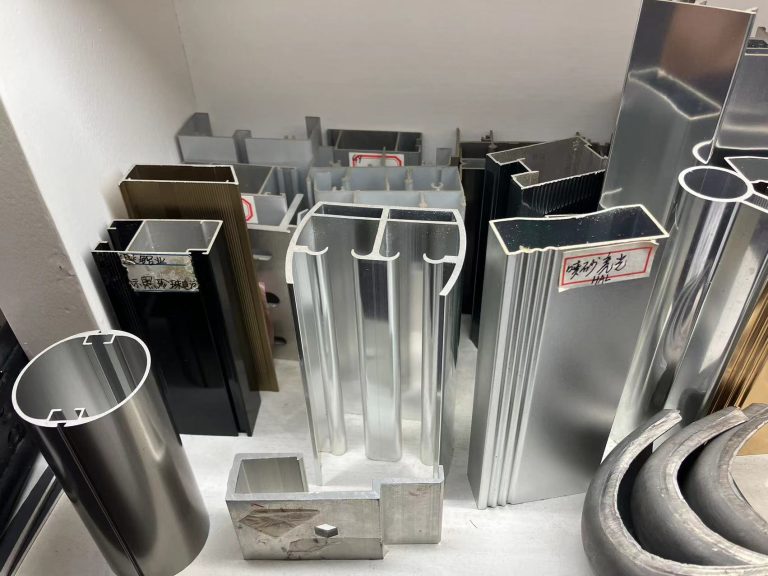What is 1100 Aluminum Alloy?

1100 Aluminum Alloy contains at least 99% pure aluminum. It includes up to 0.9% combined silicon and iron. This high purity makes the alloy soft, ductile, and easy to form.
Common products made from 1100 aluminum include:
- Household aluminum foil
- Food packaging
- Chemical storage equipment
- Decorative trim
The alloy resists corrosion and does not rust easily. Its high thermal and electrical conductivity makes it suitable for heat exchangers and electrical applications.
1100 aluminum is easy to shape into sheets or coils. Manufacturers use it when they need a material that bends without breaking. For example, the foil you use in your kitchen is likely made from this alloy.
If you need a lightweight, flexible, and corrosion-resistant material, 1100 aluminum is a strong choice. Its purity and workability make it a staple in many industries.
Properties of 1100 Aluminum Alloy
1100 aluminum alloy cannot be strengthened by heat treatment. Manufacturers increase their strength through cold working methods like rolling or drawing.
This alloy resists corrosion in most environments. Anodizing the surface further improves its corrosion resistance. Products such as outdoor signs and chemical storage tanks use 1100 aluminum for this reason.
1100 aluminum conducts electricity and heat efficiently. It is a common material for heat exchangers, transformer windings, and electrical busbars.
The alloy bends and forms easily. Manufacturers use it to produce aluminum foil, deep-drawn parts, and extruded shapes.
1100 aluminum welds well with standard techniques, including TIG and MIG welding. Fabricators can join it easily for both large and small projects.
Its minimum tensile strength is 95 MPa. This level of strength suits applications that require flexibility and corrosion resistance rather than high structural strength.
Manufacturing Processes for 1100 Aluminum Alloy
Manufacturers use several methods to shape 1100 aluminum alloy for different applications.
- Extrusion: Heated 1100 aluminum passes through a die to create profiles with specific cross-sections. This process produces window frames, tubes, and custom industrial parts.
- Welding: Common welding techniques, such as TIG and MIG, join pieces of 1100 aluminum. Welders use this method to assemble storage tanks, piping, and fabricated structures.
- Cutting: Saws, shears, or CNC machines cut the alloy into precise shapes and sizes. This step creates sheets, plates, and custom components for various industries.
- Stretching (Drawing): The alloy is pulled through dies to form bars, wires, or strips. This method produces electrical conductors and flexible aluminum strips.
Each process highlights the alloy’s formability and versatility. Manufacturers select the method based on the final product’s requirements.
Common 1100 Aluminum Alloy Products
1100 aluminum alloy appears in many everyday and industrial products. Builders use it for interior ceilings, exterior wall panels, and architectural trim. Manufacturers form it into window and door frames for precise, durable installations.
Food and pharmaceutical companies rely on 1100 aluminum for packaging. The alloy becomes foil, containers, and blister pack lids that keep food fresh and protect medicine from moisture.
Electronics producers use 1100 aluminum for heat sinks, electrical conductors, and device enclosures. Its high conductivity supports efficient cooling and stable electrical flow.
In transportation, 1100 aluminum forms lightweight bicycle frames, wheels, and automotive heat shields. Its low weight and resistance to corrosion extend the life of these parts.
Sports equipment makers shape the alloy into golf clubs, skis, and similar gear. Its flexibility and strength allow for custom designs and reliable performance.
1100 aluminum alloy delivers lightweight, corrosion resistance, and easy fabrication across these applications.
Final Thoughts
1100 aluminum alloy delivers high purity and reliable performance. Manufacturers use it to produce food packaging that preserves freshness, architectural panels that resist corrosion, and electrical components that conduct heat and electricity efficiently.
Ongoing improvements in aluminum processing create new applications for this alloy. You will find 1100 aluminum in lightweight vehicle parts, modern electronics, and advanced packaging. Its combination of easy fabrication and corrosion resistance keeps it valuable across industries.
1100 aluminum alloy offers practical solutions for today’s manufacturing needs and adapts to future demands.






